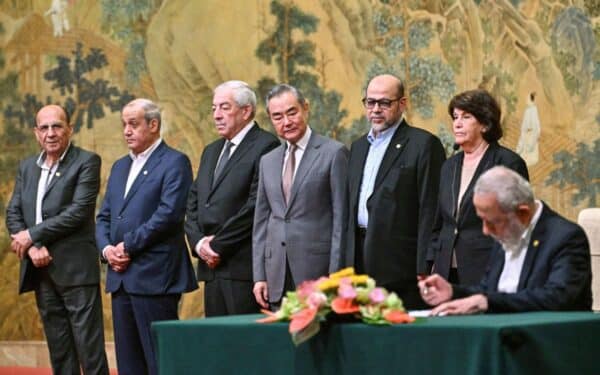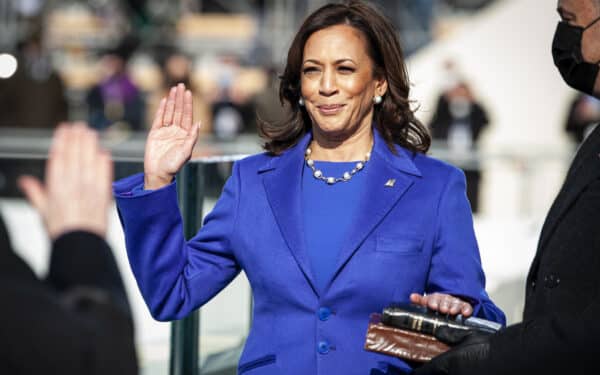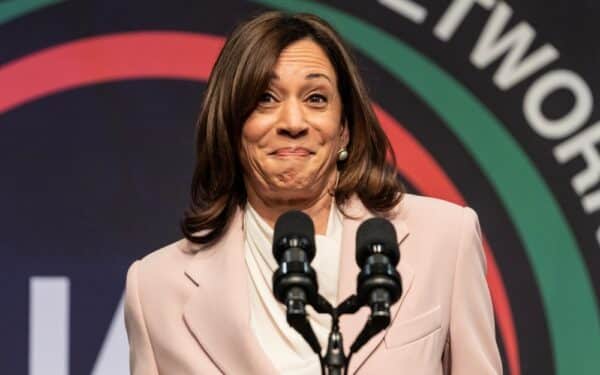Schadenfreude may be a German concept, but the Scots are its greatest exponents. In times of adversity (and Scottish history records no other times) Scots draw consolation from the encouraging maxim: “There’s aye somebody worse off than yerself.” For proof of that axiom today, Scots need look no further than First Minister Nicola Sturgeon. She is that somebody.
Things are not going awfully well on the devolved side of Hadrian’s Wall. So, no change there, you might say; but you would be wrong – there is a significant change. Like those isolated South Sea islanders in the 19th century who had never identified the link between sexual congress and procreation until the advent of European explorers, there are signs that many Scots are beginning, tentatively, to draw a connection between a withering economy, an imploding health service and failing schools and the incompetence or indifference of the SNP government.
The recently published figures for GDP growth show that in the past year the Scottish economy grew by 0.6 per cent, compared with 1.7 per cent growth for the UK as a whole. The SNP blamed this economic stagnation on the Brexit vote, a phenomenon that may be unfamiliar to English readers since, if one understands the SNP correctly, it appears to have occurred only in Scotland, to its serious economic disadvantage.
The last set of GERS (Government Expenditure and Revenue in Scotland) figures contained cheering news for the Scottish government: Scotland’s deficit has fallen and its oil revenue has increased. So, independence is back on the cards, Indyref2 game on? Er, up to a point, Lord Copper. The deficit is down to £13.3bn, or 8.3 per cent of GDP, and North Sea revenue has rocketed from a puny £56m in 2016 to a stonking £208m. Of course, there is still a modest discrepancy between these figures and those that were touted by the SNP during the independence referendum campaign in 2014.
After a decade in power in Scotland, during which the SNP has notoriously neglected all the normal responsibilities of governance while obsessing over the independence issue, its multiple failures are coming home to roost. SNP manifesto promises in two elections have evaporated. The latest row is over the closure of a children’s ward at the Royal Alexandra Hospital in Paisley.
There might be clinical arguments for the transfer to a hospital in Glasgow, but the problem for Sturgeon is she promised in a televised debate at the last Scottish election not to close it. For part of the SNP’s decade in power Nicola Sturgeon served as Scottish health minister. Now with waiting times pledges unfulfilled and A & E departments in meltdown she faces the taunt ‘Si monumentum requiris…’, though perhaps not in those precise terms in the chamber at Holyrood.
One of the SNP’s flagship reforms (the euphemism for tyrannical self-empowerment) was to amalgamate Scotland’s eight police forces into one “service” called Police Scotland. The potentially totalitarian undertones of such a change were canvassed by critics at the time: with eight chief constables there were bound to be one or two mavericks; with just one, political influence could more easily be brought to bear. Yet even this project has ended in disaster, with Police Scotland mired in so many scandals even the conspiracy theorists are showing signs of bewilderment.
The chief constable was sent on special leave when bullying allegations against him, which he denies, were made. He was apparently reinstated by the Scottish Police Authority then returned to leave after an alleged intervention by Justice Secretary Michael Matheson, leading to accusations of political interference. An assistant chief constable is also under suspension on different charges – one of them allegedly failing to discipline a colleague for using a police rucksack while off duty – as are three other officers. Justice minister Matheson claims, however, that Police Scotland is still the “Match of policing anywhere in the world”.
Arguably, Nicola Sturgeon could plead she did not ask to be judged on her Keystone Cops police force, the tribulations of Scottish public health or even the economy. So, what did she ask to be judged on? In her own words: “Let me be clear – I want to be judged on this. If you are not, as First Minister, prepared to put your neck on the line on the education of our young people then what are you prepared to? It really matters.”
Right, then, First Minister, education it is. The most recently published figures from the triennial Programme for International Student Assessment (PISA), the “league tables” based on an assessment of 540,000 pupils from the 35 member nations of the Organisation for Economic Cooperation and Development (OECD) and 37 partner countries, provide an instructive insight into the state of Scottish education under SNP stewardship.
The PISA survey shows that since 2006, the year before the SNP came to power, Scotland’s ranking in science has fallen from 10th to 19th, in reading from 11th place to 23rd and in maths from 11th to 24th. These are the disciplines most closely associated with life opportunities. In science, the percentage of Scottish pupils classed as showing “low performance” increased from 12.1 per cent three years previously to 19.5 per cent. As early as 2012 Scotland was being outperformed in maths by countries such as Estonia and Vietnam, with 18 per cent of Scottish 15-year-olds rated as unable to “participate effectively and productively in life”.
Sturgeon’s answer to that is to let them rot on benefits and bring in immigrants to do the jobs her North Korean education system has left them incapable of performing. A year ago a report by Sturgeon’s own government on its ludicrously named Curriculum for Excellence stated that 28 per cent of P7 pupils are “not achieving required levels of literacy and numeracy”. The SNP has successfully reversed the process of Scottish youth literacy, first signalled in the cloth-cap days of blackboards and chalk when the graffiti appeared lower down on the Glasgow tenement walls.
The SNP came to power in 2007 on a pledge to cut class sizes in P1-P3 to 18 or fewer: today the average P1-P3 class size is 23.2, one of the highest in the world. On the SNP’s first day in government there were 55,100 teachers in Scotland; today there are 50,592. While this rot was setting in, the Scottish government was concerned only with independence referenda, legislating on minimum prices for alcohol and implementing its Orwellian aspiration to impose a state-appointed Named Person to monitor every Scottish child, with greater authority than parents.
That totalitarian intrusion into family life – in any case unaffordable and with insufficient personnel available to implement it – was derailed by the Supreme Court. Still Sturgeon battles on to salvage the scheme; last month the education committee at Holyrood blocked it but she remains determined to have her way. That is good, as it is a serious vote loser for the SNP. Already a minority government, the SNP’s fortunes are further faltering.
Last week a new YouGov poll in the Times showed SNP support down by 4 per cent in both Westminster and Holyrood voting intentions, to 36 per cent for the former and 38 per cent for the latter. On independence the figures showed No at 50 per cent, Yes at 37 per cent. Only 36 per cent of voters support a further referendum in the next five years. The writing is on the wall for Nicola Sturgeon: there is always someone worse off than yourself, but she may be hard pressed to identify who it might be.




